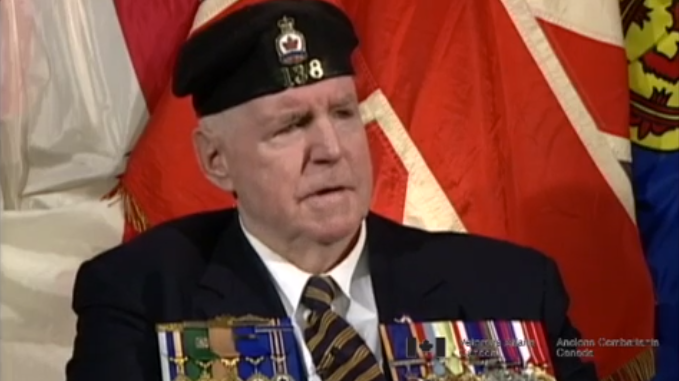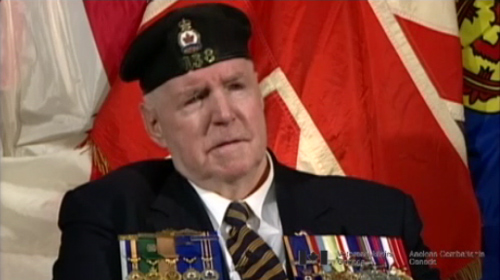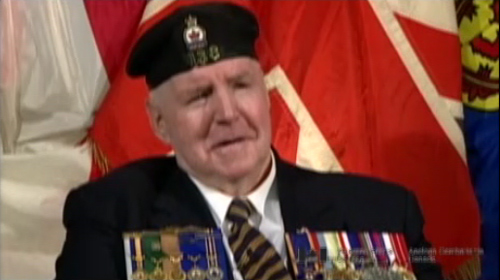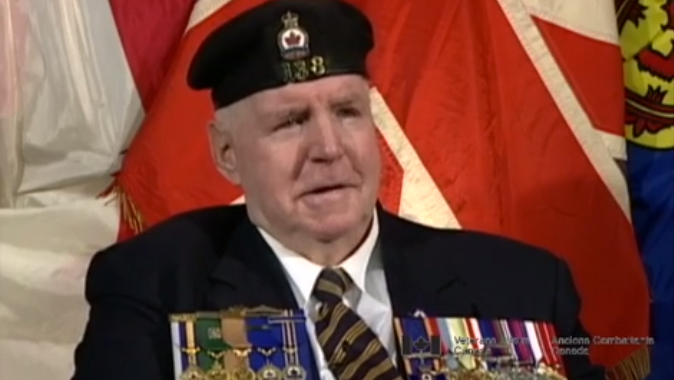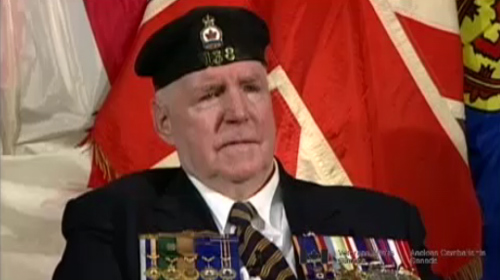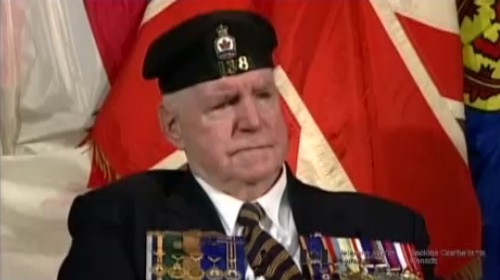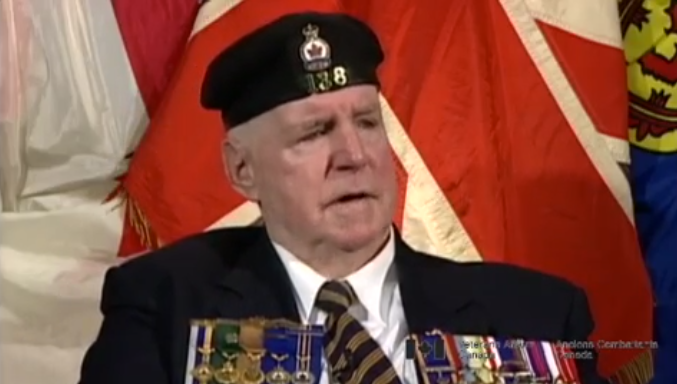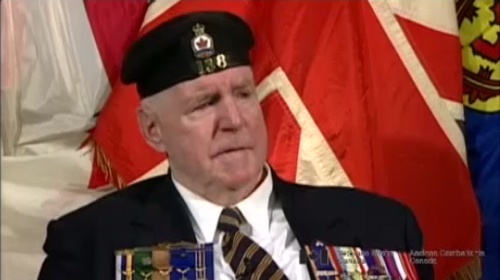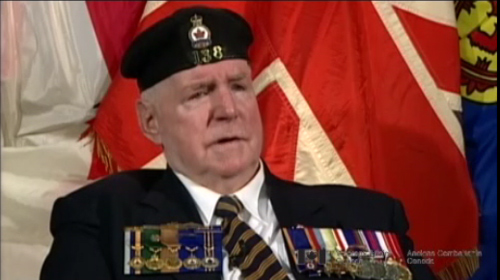“About that draft aboard the minesweeper” I said, “the
Vegreville.” He said, “Yeah, what about it?” I said, “Where’d
she go at?” “Well, they were sweeping mines out of the Belle,
Strait of Belle Island, Avalon Peninsula.” And then she said,
“Oh, the Vegreville is an escort for the HMC, for the Caribou,
the, the vessel that goes from North Sydney to Newfoundland.”
“Oh, yeah.” “Yeah, they go twice a week. Someone go in and pick
them up. Why don’t you go onboard that ship. You’ll get in there
and you go to north Sydney. All you gotta do is get a taxi to go
home.” By God, almighty God, I’m going. I signed up hook, line
and sinker. Yeah, I get as far as the gates, at South Bar there
at Point Edward, and the convoy, they . . . another vessel . . .
we take one vessel in, the other vessel be ready to go, just
turn around. I even watched the cars on the New Waterford
highway, and I used to wave to them goodbye, oh yeah. But for
those German mine layers, they wouldn’t come out during the day
because there’d be aircraft patrolling for them and there’d be
escort of the navy patrol. They’d come out at night. They’d work
at night. And they would lay those mines and, Mr. Man, they
layed them right in the path of the ships that were coming out
of the convoy. And then the next day, we’d have to go out and
we’d start, day break in the morning, and we wouldn’t be out
there about half an hour, three or four of those ships. There
was about ten ships involved, ten mine sweepers, and they’d,
they’d have those mines going, sweep the mines and destroy them.
And there used to be anywhere from 10 to 12 mines a day. It was
no problem at all. But they had, they had a floating mine which
was bad. The way the mines work is it’s a mine and then it’s,
it’s a weight attached onto the ship. The ship would draw thirty
feet of water. Well, they would put that down. Maybe the ship
would draw up when it hit. When it would hit 15, it would break
them in two. They were smart, very smart people, and them young,
young German submarine commanders, they were brilliant. They
were ruthless and they were cruel, but they were smart. Like I
say, a young German soldier, he’d have to know navigation, he’d
have to know seamanship, he’d have to know electrical, he’d have
to know engineering, but man, oh, man, he’s smart. In fact, one
of those young German submarines came right from Germany, sailed
right up the St. Lawrence River, torpedoed seven ships, went
back and was given the Iron Cross by doing this, in Kehl,
Germany. That’s how smart they were, very smart people. We’d
have a minesweeper, minesweeper . . . some of the Americans,
they had wooden minesweepers, but our ships were made of steel.
And they had what they call a degaussing gear. This gear, they’d
put a cable over the back of the ship, and they’d send rays on
the, from this ship, and would clear the front of the ship and
would sweep the mines away, so that when the mines came to back
aft . . . it’s just like fishing with a bobber. There was a big
sitting there, and when that went down, they said, “Uh, oh. We
got something.” And the cable that was going down through would
cut the small cable, and the mine would float to the top and it
would be destroyed by gun fire. Yeah, and they were plentiful.
They were plentiful. It was a, it was a tedious job, but it was
a crazy job. But like I said before, we were too crazy
to realize what we were doing, I guess.



